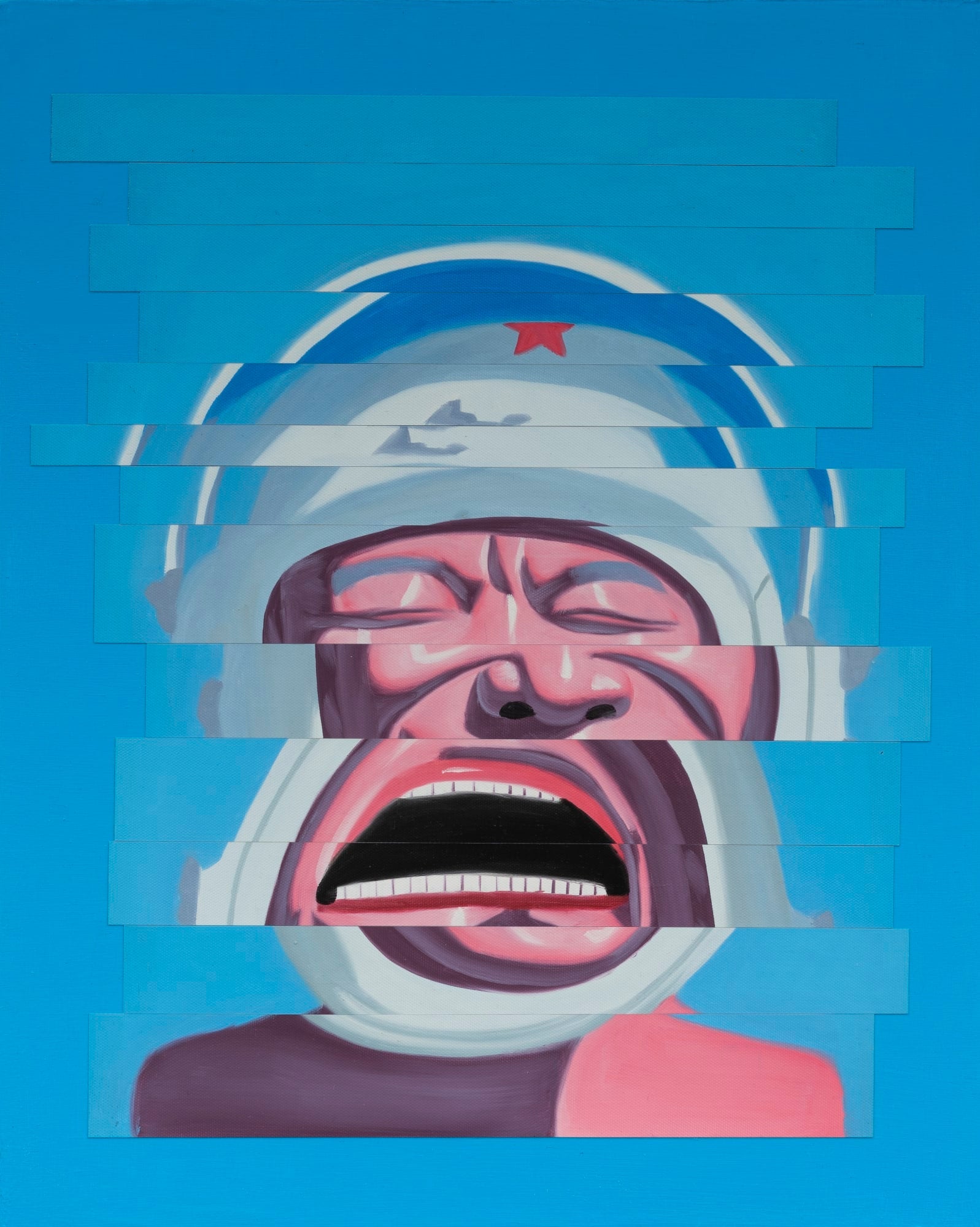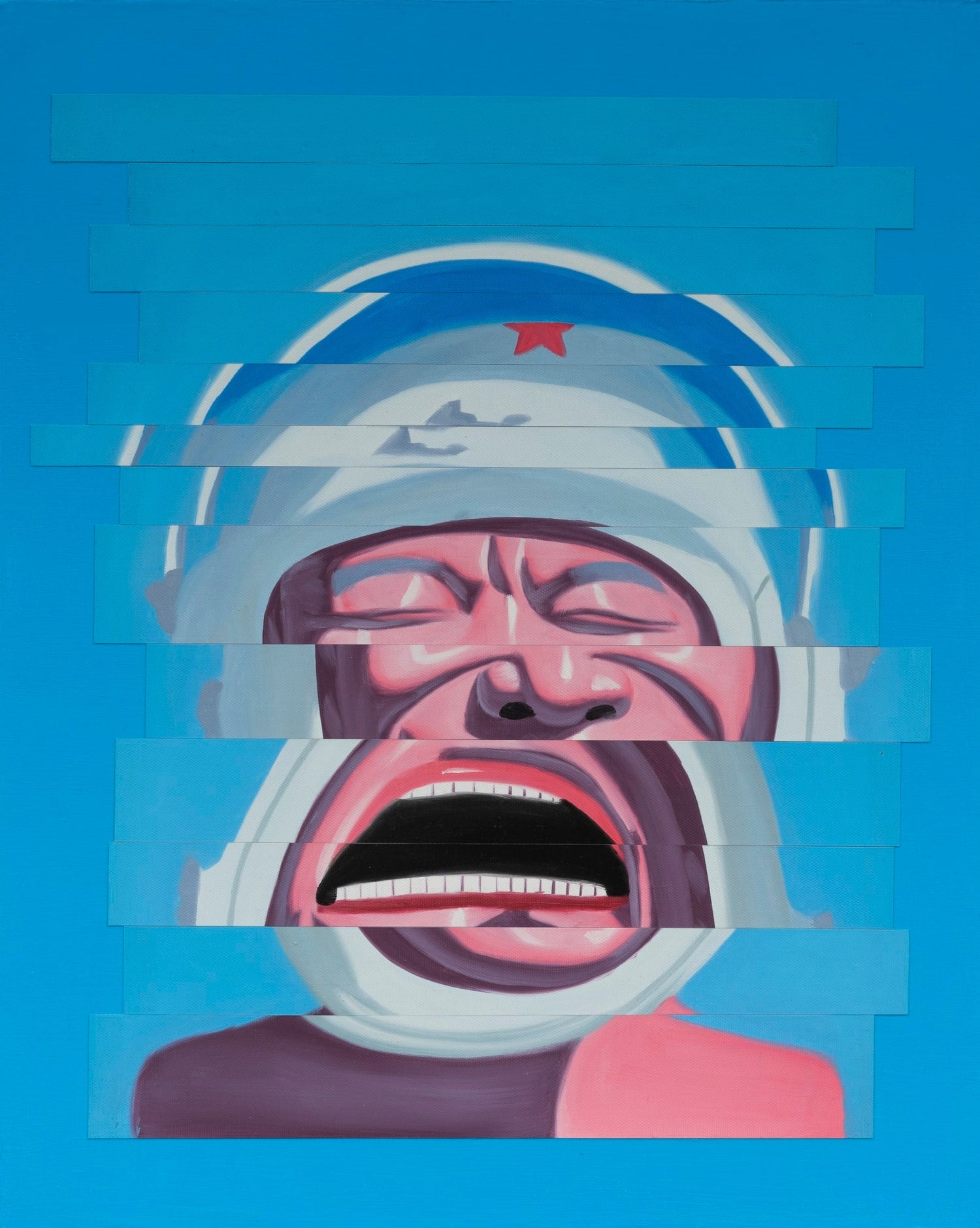I'm Not a Copy, 2020
Acrylic on canvas on panel
50.8 x 40.6 cm
Copyright The Artist
About The Artwork
This artwork is made from a poorly painted reproduction of a famous Chinese artist's work which has been cut up and glued to a panel. The cut pieces are rearranged to form a new composition that is similar but different. The viewer is left with an image that is significantly distorted and damaged, but has new perceptual potential. The artist wrote of the artwork, "By cutting up the original painting and rearranging the parts I created a new visual language. While the original painting is aesthetically pleasing, the new work is somewhat grotesque. The work is about the physical transformation of the image. It is a metaphor of the transfiguration of the self." The artist's process of fragmentation and rearrangement is fairly common in Pop Art, and this work is an excellent example. Conceptually, this artwork is not too different from the work of Rauschenberg and Warhol. Hsieh creates a new work by rearranging the parts of a famous artwork, but rather than using the object as he found it, he chose to cut it up. The work is about the physical manipulation of the object, and the resulting distortion of the original meaning. The artist has said, "I am interested in exploring the relationship between the original and the copy, and the new meanings that can be created through the transfiguration of the self." This transfiguration of the self is a common theme in Pop Art. It is titled I'm Not a Copy," which is a reference to the famous phrase, "I'm not a copy. I am a copy." "Born in Taipei, Taiwan, Hsieh Chih-Chiang moved to the United States at the age of 12. In 1989 he started a series of works that included the performance of himself rowing on the Hudson River and flying a kite on a beach. In the mid-1990s, Hsieh began to make and exhibit works that were direct copies of famous works of art by famous artists, such as van Gogh and Warhol. He would cut the prints into pieces and reassemble them to create an entirely new work of art. He calls this process of cutting up an existing work of art and reassembling it as a new work of art 'transfiguration of the self.' One of his most well-known works is a copy of a famous Chinese painting, The Reclining Buddha, by the artist Liang Kai, which was cut into over a thousand small pieces, reassembled, and re-tattooed on the artist's back. It took him two years to complete." - Godamarie Danivont
Exhibitions
Alex Reben AI-MAZING, Gazelli Art House, London, UK (2021)
About Alexander Reben
Alexander Reben is an artist and MIT-trained roboticist whose work probes the inherently human nature of the artificial. Using tools such as artificial philosophy, synthetic psychology, perceptual manipulation, and cutting-edge technology, he brings to light our inseparable evolutionary entanglement to the invention, which has unarguably shaped our way of being. This “art as experiment” allows us to understand who we are and consider whom we will become in our continued co-development with our artificial creations. Reben’s artwork and research have been shown and published internationally, and he consults with major companies, guiding innovation for the future of the social machine.
Among the first artists to be producing AI oil paintings, he has exhibited at Vitra Design Museum, MAK Museum Vienna, Design Museum Ghent, Vienna Biennale, ARS Electronica alongside IDFA, Tribeca Film Festival, TFI Interactive, Camden Film Festivals, Doc/Fest and the Boston Cyberarts Gallery. His work has been covered by NPR, The Wall Street Journal, The New York Times, Washington Post, Fast Company, Filmmaker Magazine, New Scientist, BBC, PBS, Discovery Channel, Cool Hunting and WIRED, among others. He has lectured at TED, SXSW, TTI Vanguard, Google, UC Berkeley, SMFA, CCA, MIT, and other universities. Reben has built robots for NASA and is a graduate of the MIT Media Lab, where he studied human-robot symbiosis and art. He is a 2016-2017 WIRED innovation fellow, a Stochastic Labs Resident, and visiting scholar in the UC Berkeley psychology department.



